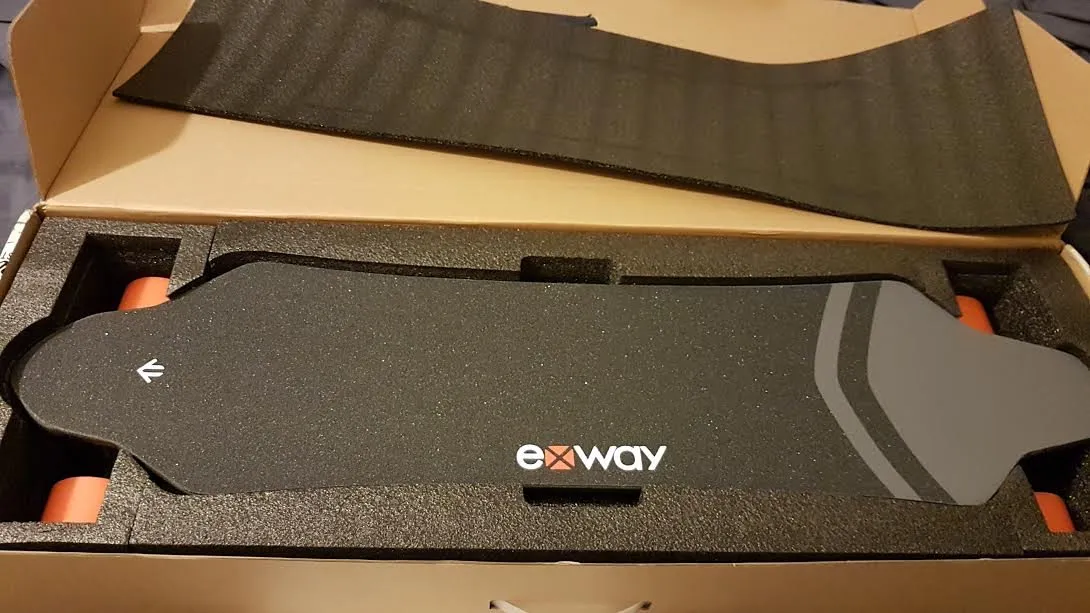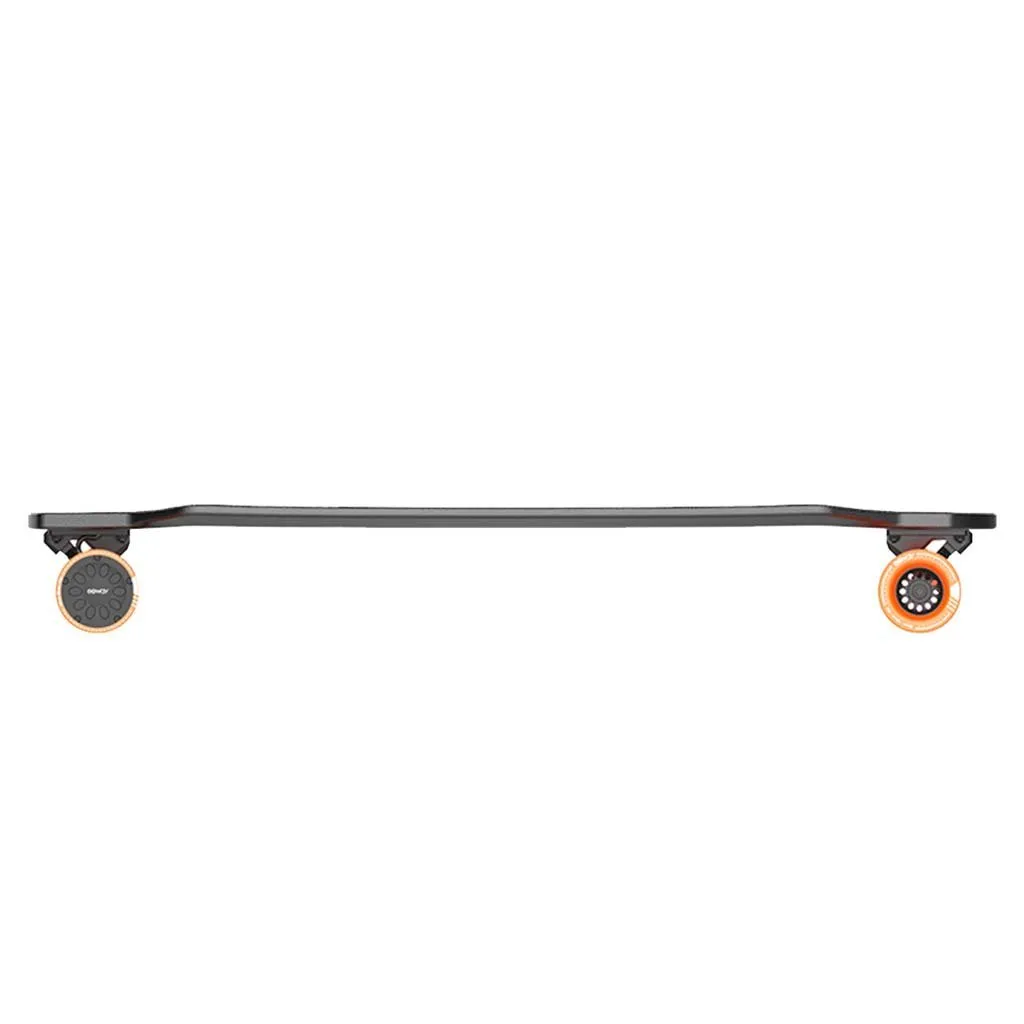As a noted in a previous post, I recently decided to buy an electric skateboard.

This very one, in fact
Here are some initial impressions.
For stats, the board features:
- 40km/h (25m/h)
- 16km range (10 mile)
- 6.3kg (14lbs)
- Seismic Trucks
- IP55 water resistance
- Max Climbing Grade: 30%
- Torque: 4.2Nm x2
- Max Power: 1000w x2
- Rated Power: 500x x2
- Rated Charger Power: 75 watts
- Input Voltage: 100-240VAC, 50/60Hz
- Battery Capacity: 120Wh
- Charging Time: Approx 2hrs with the standard charger and 35 min with the fast charger.
- Output voltage: 5V 1.5A
- Trucks: Seismic Aeon 45 degree
- Grip Tape: Waterproof
- Braking Mode: Regenerative Braking
First, I just gotta praise the shit out of the company I bought it from, Twelve Board Store. I made my purchase after hours on a Sunday, and it was at my door on Tuesday - and that's with their free shipping option.
The whole thing was shipped in a well-padded box, which is suitable for use for storage as well as reshipping if you sell. In the box is the board, the remote, a skate tool, two spare wheels, charging brick/cable, micro-USB cable for the remote, and a USB adapter to allow you to charge something like your phone from your board itself, as well as manuals.
Right off the bat, the board is heavy. It's apparently one of the lighter options available in the longboard style, but the heft means that my dreams of picking it up and carrying it around in between cruising to and from places is more of a thought exercise on 'can I be fucked lugging this thing?' if I want to go somewhere and need to carry it.
In time, if I keep riding, I might invest in a smaller, more portable short board or penny board, for increased portability.
The desk itself is constructed with Canadian Maple, Bamboo, Fiberglass, and Carbon Fiber and covered with a military grade coating making the Exway X1 the most scratch proof electric board on the market. It also hides the gear inside the board, which means it loses flexibility, but maintains a slim profile. It definitely looks good.


Image credit: exwayboard.com
The remote copies the most common shape/ergonomics on the market today, which is a good thing. It operates simply - the same button turns it on and off with a long press, as well as changes speed mode with a click, and engages reverse with a triple click. A thumb wheel acts as the throttle by pushing forward, and engaged brakes by pulling back, and operates as a dead man switch, so releasing the wheel snaps back to zero throttle and disengages the motor.

Image credit: exwayboard.com
Exway utilises an app that allows you to control many aspects of the board, including how it accelerates and brakes, top speed, and cruise control. It features four speed modes that dictate how fast it can go, starting at max 10km/h, but allows you to grow with your board as you become more comfortable. Most importantly it locks you out of the higher speed modes as well as customisation until you hit a 10km riding time - this allows you to get used to it before you start mucking around.
Jumping on the board for the first time, it's important to make it clear that I have never been on a skateboard before, and definitely not an electric one. I followed all my researched tips before getting on - put it down on a flat surface, engage the brake, have the rear end pressed against a curb to stabilise, carefully get on, planted my feet, and said a prayer to Newton that his third law of motion would serve me well.
I slowly pushed on the throttle, and immediately fell off of the board.
Well, I didn't so much fall off, as stepped off, stepped onto a particularly well placed, specifically round tree stick, slipped, and fell over.
And that's how I wound up in the ER of my local hospital for seven hours to see if I'd broken anything.
But one cannot be deterred by small setbacks. I felt fine at the time, and kept riding.
The board takes some getting used to, mostly the wobbliness. None of that seemed to show up on the hundreds of hours of videos I must have watched, but it made sense that to turn, the board needed to be able to move from side to side. It took some getting used to, and will some more, but I think I'll get the hang of it.
The operation of the board is also going to take some getting used to. It's not as tight to turn as I expected, and while I can loosen the trucks for tighter turns, it's not recommended as a novice. It's not a board designed for 45 degree turns, but long and straight cruising.
The remote felt comfortable and intuitive, and I especially liked how I could control the speed by not just increasing or decreasing force on the wheel, but by letting go of it entirely and cruising without throttle, slowing as needed, before engaging the brakes - it made for a smooth transition.
After an hour of cruising up and down the bike path, the sun was almost set, so I decided to head home. After an hour at home, I noticed that my arm was sore, and I couldn't stretch or retract it fully. I went to the ER to make sure there were no fractures, and after seven long hours in ER, six days at home, another set of x-rays, and two visits to my doctor, it turns out to just likely be some soft tissue/tendon damage, and should heal on its own.
So, am I deterred from riding still? Not at all. I did learn that I should invest in some more safety gear, though, since I wasn't wearing anything but a helmet. So, always gear up, kids.
I'll update with more impressions in a few weeks when I've had some more time with it and I look less like a beached whale trying to ride a unicycle.